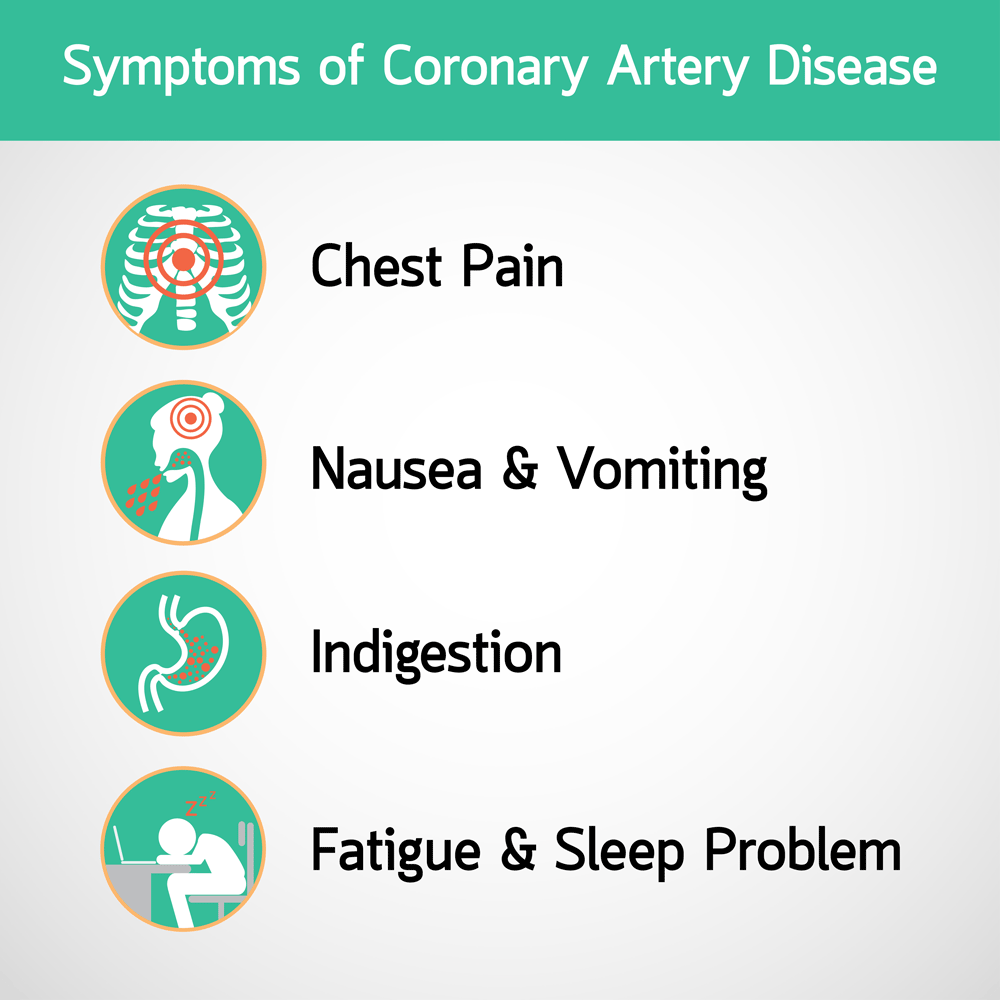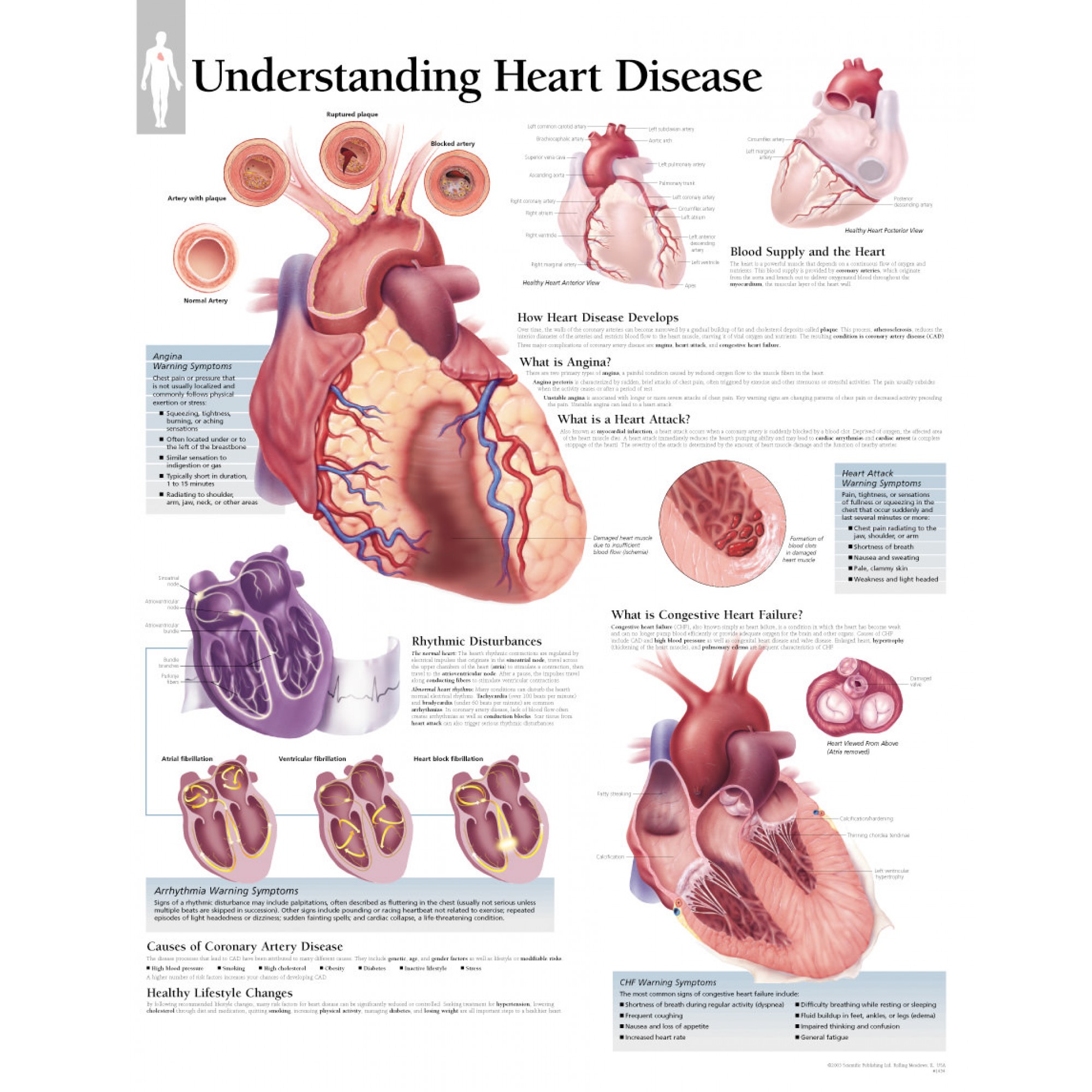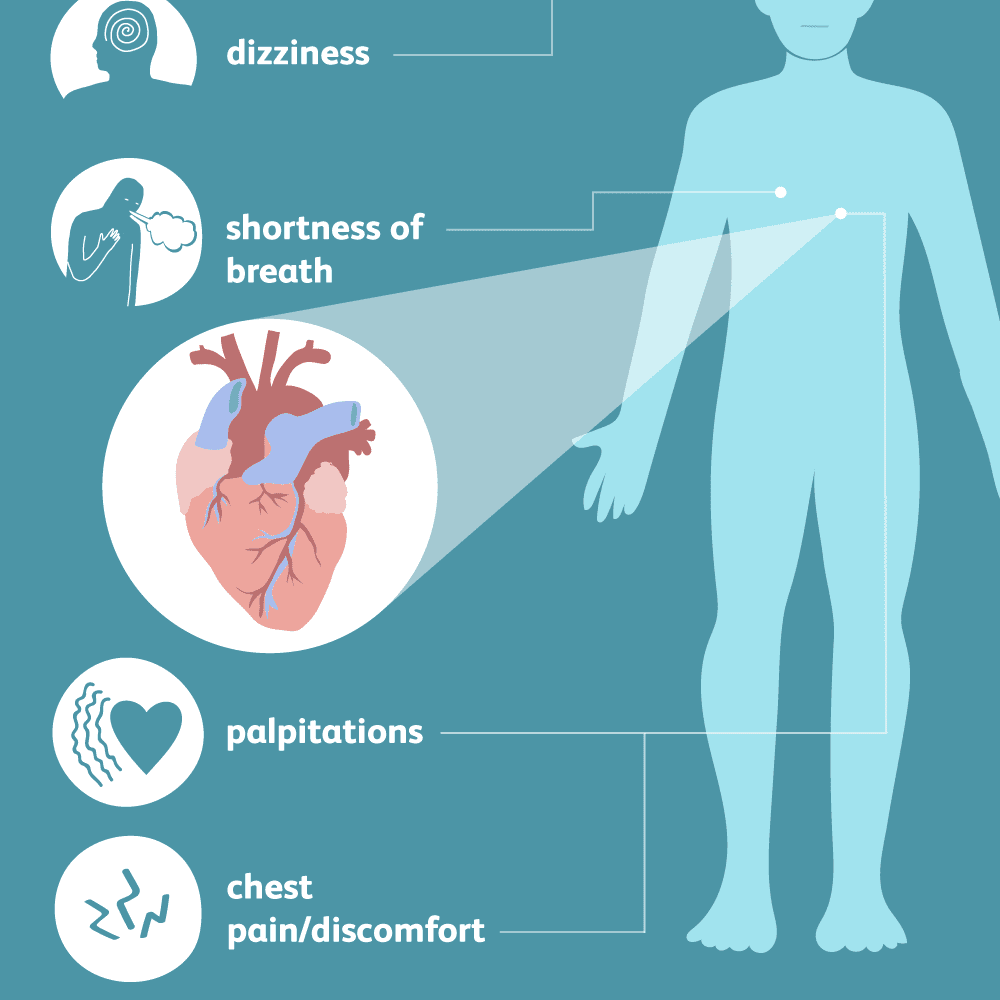Causes
Heart disease is caused by damage to all or part of the heart, damage to the coronary arteries, or a poor supply of nutrients and oxygen to the organ. Some types of heart disease, such as hypertrophic cardiomyopathy, are genetic. These, alongside congenital heart defects, can occur before a person is born. There are a number of lifestyle choices that can increase the risk of heart disease. These include:
- High blood pressure and cholesterol.
- Smoking.
- Overweight and obesity.
- Diabetes.
- Family history.
- A diet of junk food.
- Age.
- A history of preeclampsia during pregnancy.
- Staying in a stationary position for extended periods of time, such as sitting at work.
Having any of these risk factors greatly increases the risk of heart disease. Some, such as age, are unavoidable. For example, once a woman reaches 55 years of age, heart disease becomes more likely.
Symptoms
The term ‘congenital heart disease’ covers a range of conditions, but the general symptoms include:
- Sweating.
- High levels of fatigue.
- Fast heartbeat and breathing.
- Breathlessness.
- Chest pain.
- A blue tint to the skin.
- Clubbed fingernails.
In severe cases, symptoms can occur from birth. However, these symptoms might not develop until a person is older than 13 years.
Other symptoms of a heart attack include:
- Pain that travels through the body, for example from the chest to the arms, neck, back, abdomen, or jaw.
- Light headedness and dizzy sensations.
- Profuse sweating.
- Nausea and vomiting.
Diagnosis
Because CAD does not usually cause symptoms, diagnosis relies on screening for risk factors and specialized diagnostic testing. Risk factors include hypertension, high cholesterol, diabetes, and smoking, all of which are normally screened for at a routine yearly physical examination. This means that the first step in making sure that you are evaluated for “silent” CAD is maintaining regular health check-ups. Diagnosis of CAD also includes cardiac tests that can evaluate heart function and identify disease within the coronary arteries.
Treatments
The treatment of CAD requires a multi-pronged strategy that includes addressing lifestyle factors as necessary, taking prescription medications, and, often, surgical or specialized interventions to repair a severely diseased artery.
- Lifestyle factors: If you smoke, quitting is the most effective way to prevent CAD from worsening, and smoking cessation can reverse disease for some people with CAD. Obesity, lack of exercise, an unhealthy diet, and excessive stress all contribute to CAD as well.
- Medications: Cholesterol-lowering medications are available by prescription and can help reduce atherosclerotic disease and the build-up of plaque. Medications to control diabetes can help to prevent worsening of CAD. Those that lower high blood pressure and prevent blood clots may be necessary to lower the risk of a heart attack or stroke if you have CAD. And, if you have experienced a heart attack as a result of CAD, prescription medications can help alleviate some of the consequences of a heart attack, such as heart failure (a weak heart) and arrhythmias (irregular heart rhythm).






